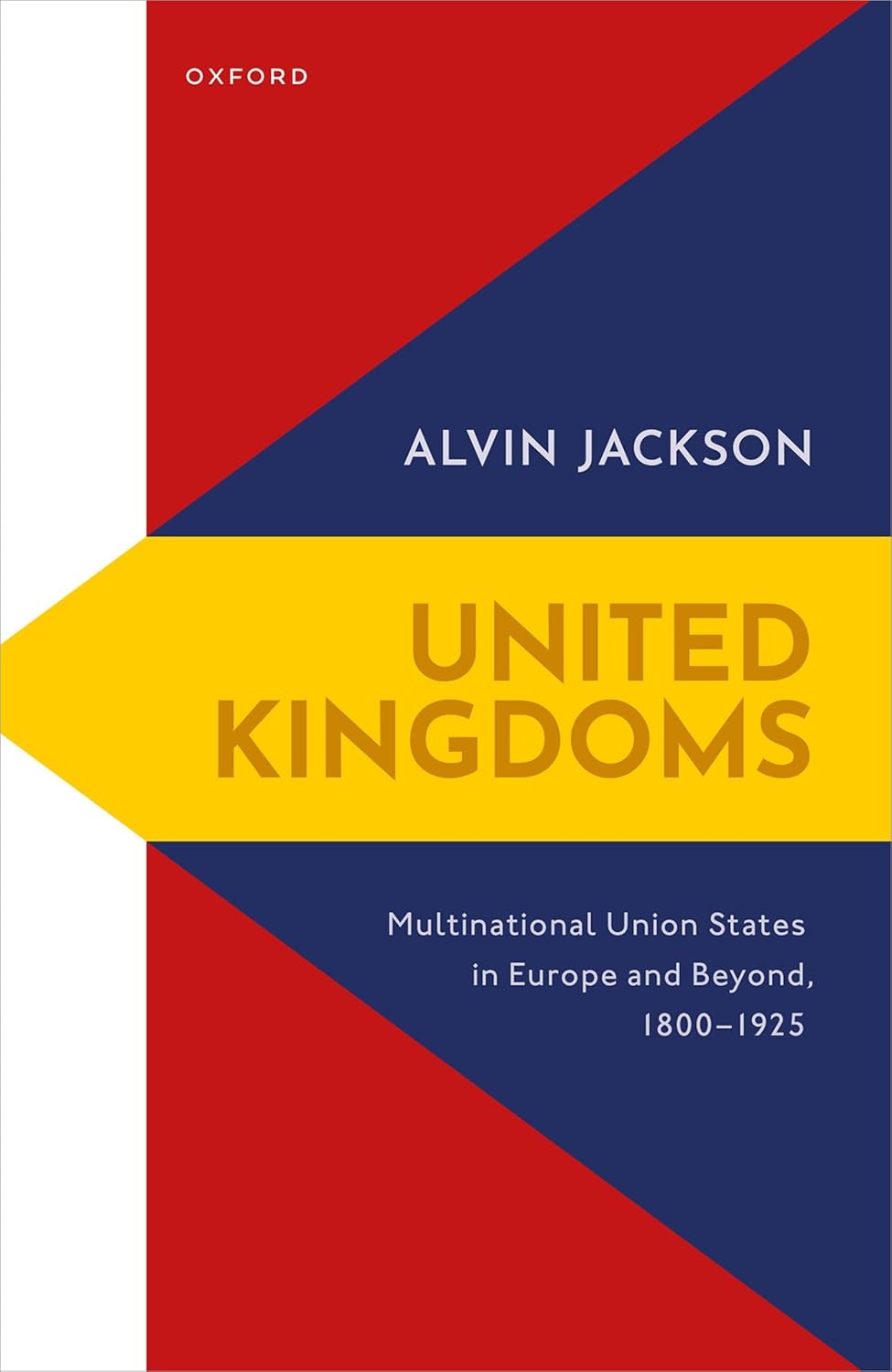ALVIN JACKSON
Oxford University Press
£35
ISBN 9780192883742
REVIEWED BY
Brian Girvin
Brian Girvin is Honorary Professor of Contemporary Politics at the University of Glasgow.
In 2007, the 300th anniversary of the Act of Union between England and Scotland passed by largely unnoticed. Public and political focus over the following years was on threats to the union rather than celebration. In both Scotland and Northern Ireland its continuation faces formidable threats from secessionists. Even in Wales autonomous, if not secessionist, sentiment has increased in recent decades. Alvin Jackson is interested in the nature of union states, their origins and under what conditions they survive or fail. This latest book is certainly the logical extension of his previous work on the Scottish and Irish unions. In it he places the United Kingdom in a comparative context with other union states that have their origins in the nineteenth century and which were influenced by the British experience of union.

The case-studies for comparison are: the UK of Scotland and Ireland (1707/1801–1922), and Wales (1535–1922); the UK of the Netherlands (1814/15–30); the UK of Sweden-Norway (1814–1905); the UK of Portugal, Brazil and the Algarves (1815–22); the United Provinces of Canada (the United Canadas) (1841–67); Austria-Hungary (1867–1918); and the Grand Duchy of Finland (1809–1917). There are no survivors, suggesting that there may have been fatal flaws in the institutional arrangement that gave rise to them. However, Jackson asks the reader to pause and look more carefully at their histories, questioning the narrowly nationalist view that failure was inevitable. Yet the book should not be considered an uncritical celebration of union states. Jackson examines traditional explanations for success and failure, drawing on recent (often revisionist) historiography to illustrate strengths, weaknesses and stress points. He notes that while the union states failed, this was rarely inevitable (though that of Portugal, Brazil and the Algarves probably was). Contingency, agency and policy choices all have to be accounted for—as does, of course, the demands from various nationalist movements for greater autonomy, if not independence, within each political system.
All the unions reviewed in this book are creations of conservative political élites responding to crisis. The 1707 union between Scotland and England is the model for the 1801 Irish union, but also for Sweden-Norway and the Netherlands-Belgium. The architect of the Irish union, Lord Castlereagh, actively promoted it as a solution to the challenges facing the dynastic powers after the revolutionary period. As Jackson notes, ‘indeed, union itself may be seen as an effort to reinvigorate some of the institutions of the ancien régime for a new age of revolution and nationhood’. However, these conservatives were not simply reactionary but in each case ‘were effectively seeking new ways of living together by constructing new ways of living apart’. On this reading, union states were institutional arrangements to maintain dynastic rule by recognising (often imperfectly) the reality of nationality within multinational states.
Living together and living apart posed very serious challenges for all these states. Norwegians wanted independence in 1814 but were forced into a union with Sweden. By the end of the century Norway was building military fortifications on its border with Sweden, leading to independence in 1905. The UK of the Netherlands was created as a geopolitical buffer against France. Dutch Protestants were politically and militarily dominant but Catholic Belgians were in the majority. The fragile nature of this arrangement was highlighted in 1830, when Belgian independence was accepted by the major powers in defiance of Dutch protests. Perhaps the most successful case is Canada. The United Provinces of Canada only lasted from 1841 to 1867 but was replaced by a confederation after careful negotiation, which reflected élite cooperation and a willingness to compromise.
The Canadian experience was rarely repeated elsewhere. Jackson highlights again and again the reluctance of dominant élites to engage seriously with non-dominant nationalities such as the Irish, the Norwegians or the Belgians. Moreover, a common pattern emerges of conceding too little too late, when political mobilisation has radicalised public opinion. Nevertheless, the author identifies a number of factors that contributed to stability and continuity. These include monarchy, aristocracy, the military, the churches and bureaucracy. However, in all cases (Ireland and Austria-Hungary especially) it proved impossible to create a state identity that could be shared by all subjects or citizens. Moreover, the dominant élites in these conservative political systems were always prepared to use coercion against insurgent groups demanding reform.
Why do unions fail? As one would expect from such a careful analysis, there is no single or simple explanation for failure or success. Jackson cites various sources that emphasise the fluidity of national identity and the availability of alternatives to independence. His most important claim is that a solution to the nationalities question was possible as late as 1914 in both Austria-Hungary and the UK. However, the onset of war and its challenges provided opportunities for nationalists that eventually dissolved the Dual Monarchy and undermined the United Kingdom of Great Britain and Ireland.
